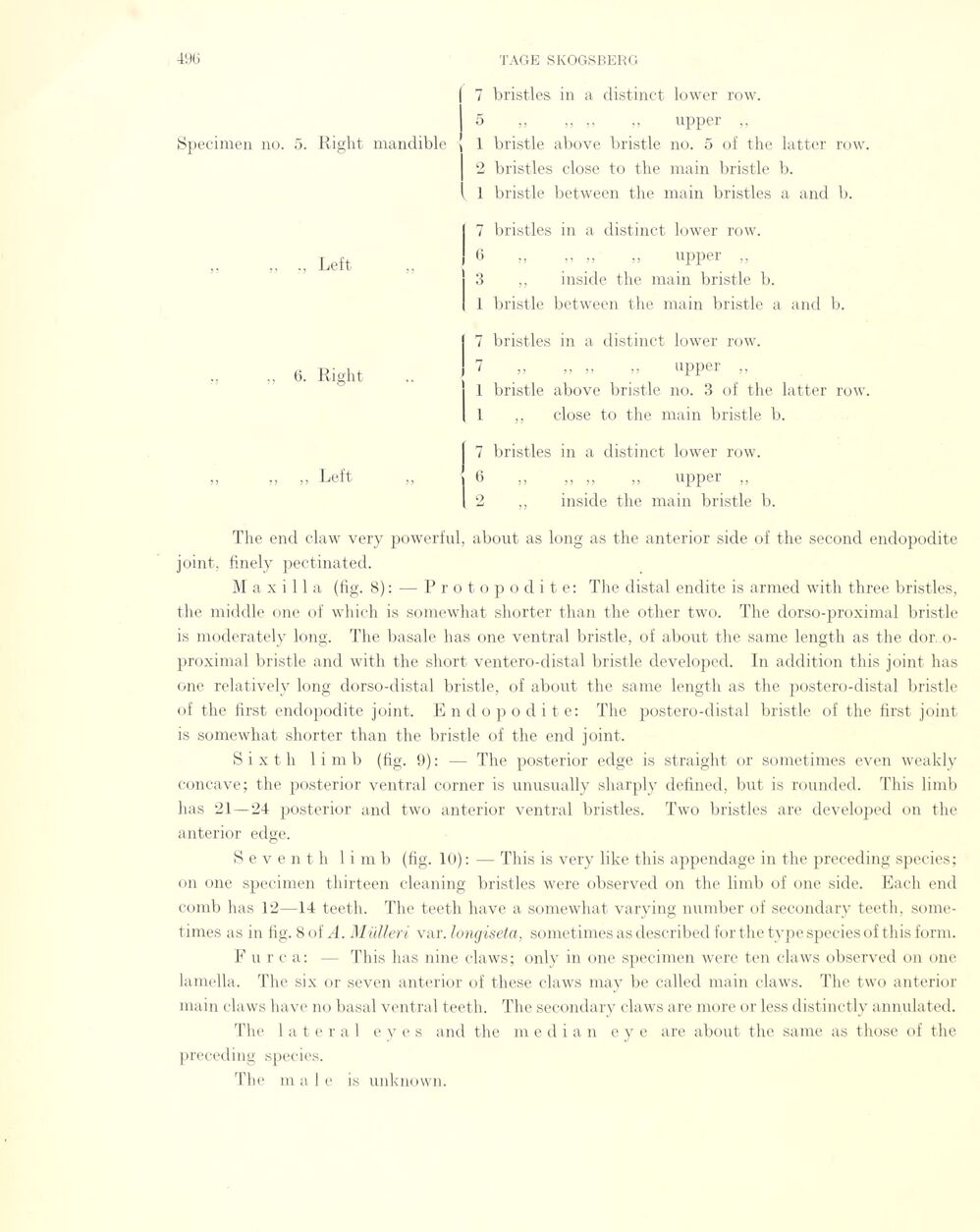
Full resolution (JPEG) - On this page / på denna sida - Sidor ...

<< prev. page << föreg. sida << >> nästa sida >> next page >>
Below is the raw OCR text
from the above scanned image.
Do you see an error? Proofread the page now!
Här nedan syns maskintolkade texten från faksimilbilden ovan.
Ser du något fel? Korrekturläs sidan nu!
This page has never been proofread. / Denna sida har aldrig korrekturlästs.
Specimen no. 5. Right mandible
7 bristles in a distinct lower row.
5 ,, ,, ,, ,, upper ,,
1 bristle above bristle no. 5 of the latter row.
2 bristles close to the main bristle b.
1 bristle between the main bristles a and b.
7 bristles in a distinct lower row.
6 „ ,> ,, ,, upper „
3 ,, inside the main bristle b.
1 bristle between the main bristle a and b.
,, 6. Right
Left
7 bristles in a distinct lower row.
7 ,, „ „ „ upper „
1 bristle above bristle no. 3 of the latter row.
L ,, close to the main bristle b.
7 bristles in a distinct lower row.
b J? >î î? î) upper ,,
2 ,, inside the main bristle b.
The end claw very powerful, about as long as the anterior side of the second endopodite
joint, finely pectinated.
Maxilla (fig. 8): — Protopo dite: The distal endite is armed with three bristles,
the middle one of which is somewhat shorter than the other two. The dorso-proximal bristle
is moderately long. The basale lias one ventral bristle, of about the same length as the dor
o-proximal bristle and with the short ventero-distal bristle developed. In addition this joint has
one relatively long dorso-distal bristle, of about the same length as the postero-distal bristle
of the first endopodite joint. Endopodite: The postero-distal bristle of the first joint
is somewhat shorter than the bristle of the end joint.
S i X t h 1 i m b (fig. 9) : — The posterior edge is straight or sometimes even weakly
concave; the posterior ventral corner is unusually sliarply defined, but is rounded. This limb
has 21—24 posterior and two anterior ventral bristles. Two bristles are developed on the
anterior edge.
S e v e n t h limb (fig. 10): — This is very like this appendage in the preceding species;
on one specimen thirteen cleaning bristles were observed on the limb of one side. Each end
comb has 12—14 teeth. The teeth have a somewhat varying number of secondary teeth,
sometimes as in fig. 8 of M. Mülleri var. lonqiseta, sometimes as described for the type species of this form.
Furca: — This has nine claws ; only in one specimen were ten claws observed on one
lamella. The six or seven anterior of these claws may be called main claws. The two anterior
main claws have no basal ventral teeth. The secondary claws are more or less distinctly annulated.
The lateral e y e s and the m e d i a n ey e are about the same as those of the
preceding species.
The ma 1 e
is unknown.
<< prev. page << föreg. sida << >> nästa sida >> next page >>